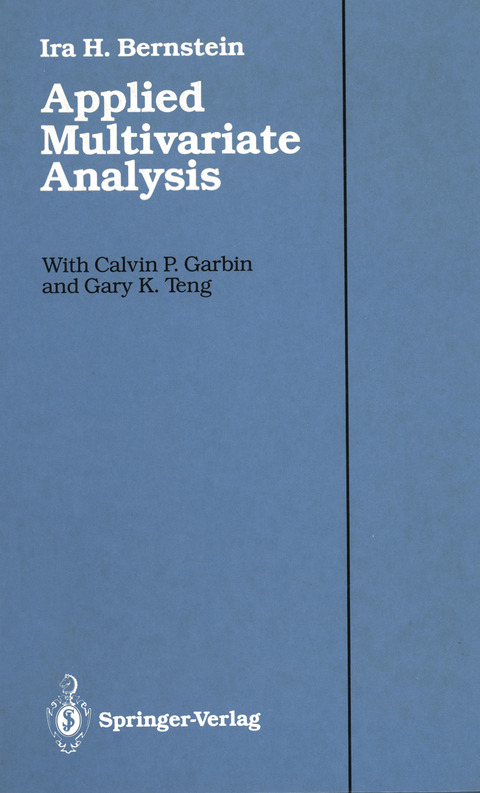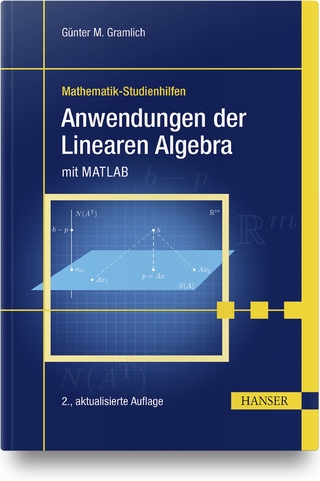
Applied Multivariate Analysis
Springer-Verlag New York Inc.
978-1-4613-8742-8 (ISBN)
1 Introduction and Preview.- Overview.- Multivariate Analysis: A Broad Definition.- Multivariate Analysis: A Narrow Definition.- Some Important Themes.- The Role of Computers in Multivariate Analysis.- Choosing a Computer Package.- Problems in the Use of Computer Packages.- 2 Some Basic Statistical Concepts.- Overview.- Univariate Data Analysis.- Bivariate Data Analysis.- Statistical Control: A First Look at Multivariate Relations.- 3 Some Matrix Concepts.- Overview.- Basic Definitions.- Basic Matrix Operations.- An Application of Matrix Algebra.- More about Linear Combinations.- Eigenvalues and Eigenvectors.- 4 Multiple Regression and Correlation—Part 1. Basic concepts.- Overview.- Assumptions Underlying Multiple Regression.- Basic Goals of Regression Analysis.- The Case of Two Predictors.- The Case of More Than Two Predictors.- Inferential Tests.- Evaluating Alternative Equations.- Example 1—Perfect Prediction.- Example 2—Imperfect Prediction plus a Look at Residuals.- Example 3—Real Personality Assessment Data.- Alternative Approaches to Data Aggregation.- 5 Multiple Regression and Correlation—Part 2. Advanced Applications.- Overview.- Nonquantitative Variables.- The Simple Analysis of Variance (ANOVA).- Multiple Comparisons.- Evaluation of Quantitative Relations.- The Two-Way ANOVA.- The Analysis of Covariance (ANCOVA).- Repeated Measures, Blocked and Matched Designs.- Higher-Order Designs.- 6 Exploratory Factor Analysis.- Overview.- The Basic Factor Analytic Model.- Common Uses of Factor Analysis.- An Overview of the Exploratory Factoring Process.- Principal Components.- Factor Definition and Rotation.- The Common Factor Model.- An Example of the Common Factor Model.- Factor Scores.- Addendum: Constructing Correlation Matrices with a Desired FactorStructure.- 7 Confirmatory Factor Analysis.- Overview.- Comparing Factor Structures.- Oblique Multiple Groups Tests of Weak Structure.- LISREL Tests of Weak Substantive Models.- LISREL Tests of Strong Substantive Models.- Causal Models and Path Analysis.- Causal Models and LISREL.- Addendum: A Program to Obtain Oblique Multiple Groups Solutions.- 8 Classification Methods—Part 1. Forming Discriminant Axes.- Overview.- Discriminant Analysis with Two Groups and Two Predictors.- Discriminant Analysis with Two Predictors and Three Groups.- Discriminant Analysis—The General Case.- 9 Classification Methods—Part 2. Methods of Assignment.- Overview.- The Equal Variance Gaussian Model.- The Unequal Variance Gaussian Model.- Other Signal Detection Models.- Strategies for Individual Classification.- Alternative Strategies—An Overview.- A Numerical Example.- Classification Based on Salient Variables.- Discriminant Functions and Classification.- Classification Based on Distance Measures.- A Summary of Strategic Considerations in Classification.- 10 Classification Methods—Part 3. Inferential Considerations in the Manova.- Overview.- The Two-Group MANOVA and Hotelling’s T2.- Tests of Vector Means with Multiple Groups.- The Simple MANOVA with Multiple Groups.- The Multivariate MANOVA.- The MANCOVA.- 11 Profile and Canonical Analysis.- Overview.- Profile Similarity.- Simple and Hierarchical Clustering.- Canonical Analysis.- 12 Analysis of Scales.- Overview.- Properties of Individual Items.- Test Reliability.- Numerical Example I: A Unifactor Scale.- Numerical Example II: A Two-Factor Scale.- Test Validity.- Appendix A—Tables of the Normal Curve.- Appendix D—Tables of Orthogonal Polynomial Coefficients.- Problems.- References.- Author Index.
| Co-Autor | Calvin P. Garbin, Gary K. Teng |
|---|---|
| Zusatzinfo | XIX, 508 p. |
| Verlagsort | New York, NY |
| Sprache | englisch |
| Maße | 155 x 235 mm |
| Themenwelt | Mathematik / Informatik ► Mathematik ► Algebra |
| Mathematik / Informatik ► Mathematik ► Wahrscheinlichkeit / Kombinatorik | |
| Sozialwissenschaften ► Soziologie ► Empirische Sozialforschung | |
| Wirtschaft ► Allgemeines / Lexika | |
| Wirtschaft ► Volkswirtschaftslehre ► Ökonometrie | |
| ISBN-10 | 1-4613-8742-6 / 1461387426 |
| ISBN-13 | 978-1-4613-8742-8 / 9781461387428 |
| Zustand | Neuware |
| Haben Sie eine Frage zum Produkt? |
aus dem Bereich


